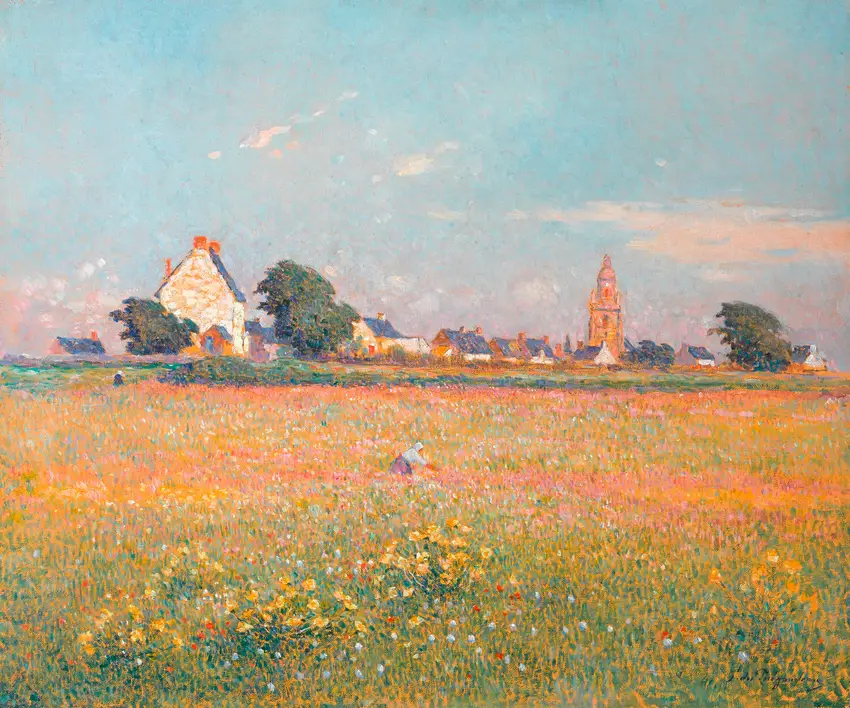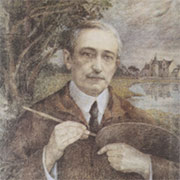Ferdinand du Puigaudeau
Ferdinand du Puigaudeau (1864–1930), French, A painter of luminous, dreamlike scenes, he found inspiration in the play of light on water and the quiet drama of coastal life. Though often associated with the Pont-Aven School, his work stood apart—less concerned with bold synthetism than with capturing fleeting atmospheric effects. Moonlit processions, flickering lanterns over nocturnal harbors, and the shimmering haze of twilight became recurring motifs, rendered with a poetic sensitivity that bordered on the mystical.
Ferdinand du Puigaudeau’s Brittany was neither rugged nor primitive but steeped in a soft, almost theatrical glow. His brushwork loosened over time, dissolving forms into washes of color that suggested rather than defined. This approach drew criticism from some contemporaries, who found his work overly decorative, but it also earned him a devoted following. Collectors were drawn to the emotional resonance of his compositions, where the ordinary—a group of villagers gathering by the shore, a lone boat adrift at dusk—felt charged with quiet significance.
Financial struggles and personal setbacks shadowed his later years, yet his commitment to his vision never wavered. Today, his paintings are celebrated for their evocative stillness, a bridge between post-impressionist experimentation and the intimate lyricism of early modernism.
Ferdinand du Puigaudeau’s Brittany was neither rugged nor primitive but steeped in a soft, almost theatrical glow. His brushwork loosened over time, dissolving forms into washes of color that suggested rather than defined. This approach drew criticism from some contemporaries, who found his work overly decorative, but it also earned him a devoted following. Collectors were drawn to the emotional resonance of his compositions, where the ordinary—a group of villagers gathering by the shore, a lone boat adrift at dusk—felt charged with quiet significance.
Financial struggles and personal setbacks shadowed his later years, yet his commitment to his vision never wavered. Today, his paintings are celebrated for their evocative stillness, a bridge between post-impressionist experimentation and the intimate lyricism of early modernism.
-

Jardin fleuri (Le Croisic)
Ferdinand du Puigaudeau (French, 1864–1930)Puigaudeau paints a quiet garden in coastal Brittany with soft light and muted colors. The scene feels untouched, calm, and quietly alive.

